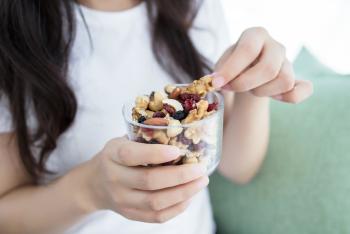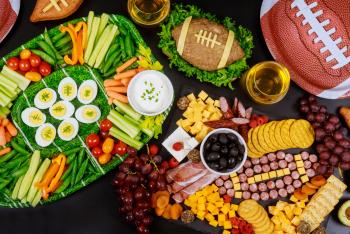Mindful snacking after bariatric surgery can help maintain steady blood sugar levels and support...
Read More

We’ve all had a similar thought as we cruise down the snack aisle in the grocery store: If I buy low-fat cookies, chips, and crackers, I can eat more of them. But that mentality may not serve you in the end.
“Low fat versions of just about any food can be found in the grocery store these days, from snacks like chips and cookies to salad dressing, condiments, and frozen meals,” said Diana Alvarado, R.D.N., dietitian at Inspira Health. “Unfortunately, foods marked ‘low fat’ or ‘no fat’ may be lower in fat but higher in sugar, salt or other high-calorie ingredients to make the food taste better.”
For decades, “fat” has been considered bad for you. But not all fat is created equal. Saturated fat, which is found in beef, pork, poultry, butter, coconut oil, palm oil, cheese, and many of the snacks you’ll find in a grocery store, can increase your cholesterol levels and contribute to clogged arteries, which can lead to heart disease, heart attack and stroke.
However, unsaturated fats, which can be found in fish, avocado, olive oil, nuts, and seeds, can actually lower your LDL, or bad cholesterol.
“Because of the bad reputation fat has gotten over the years, when people want to lose weight or eat a healthier diet, they sometimes eliminate both saturated and unsaturated fats from their diets in favor of low-fat processed foods,” said Alvarado.
When people eliminate foods higher in fat, they often replace them with foods higher in refined or simple carbohydrates, which are more processed and higher in sugar and refined grains that have been stripped of their nutritional value.
“Instead, eating a balanced diet where you focus on fruits, vegetables, ‘healthy’ fats and whole grains can help you maintain a healthy weight and avoid health issues like heart disease,” said Alvarado.
According to the Dietary Guidelines for Americans 2020–2025 from the U.S.D.A. and the Department of Health and Human Services, a healthy diet consists mainly of fruits, vegetables, whole grains and fat-free or low-fat milk and milk products; includes proteins like fish, shellfish, lean meats, poultry, eggs, legumes, nuts and seeds; and is low in saturated fats, cholesterol, salt and added sugar.
As for those cookies, condiments, frozen meals and other foods that often have low-fat versions? “Read the labels to see if the foods are actually lower-calorie than their full-fat alternatives and ensure they are not loaded with sugar or salt to compensate,” said Alvarado. It’s also vital to check the serving size.
Consider other healthy food swaps:
“Choosing healthy swaps or limiting your portions and incorporating healthy fats, whole grains, fruits, veggies and lean proteins is the foundation of a healthy diet,” said Alvarado.
If you are interested in a consultation with a registered dietitian, visit our Nutrition Counseling page or call 1-800-INSPIRA.

Mindful snacking after bariatric surgery can help maintain steady blood sugar levels and support...
Read More
Football game days are a time for fun and celebration, but they don’t have to derail your health...
Read More
Pumpkin spice lattes can be high in sugar, often exceeding daily limits in a single serving. To...
Read More
The material set forth in this site in no way seeks to diagnose or treat illness or to serve as a substitute for professional medical care. Please speak with your health care provider if you have a health concern or if you are considering adopting any exercise program or dietary guidelines. For permission to reprint any portion of this website or to be removed from a notification list, please contact us at (856) 537-6772